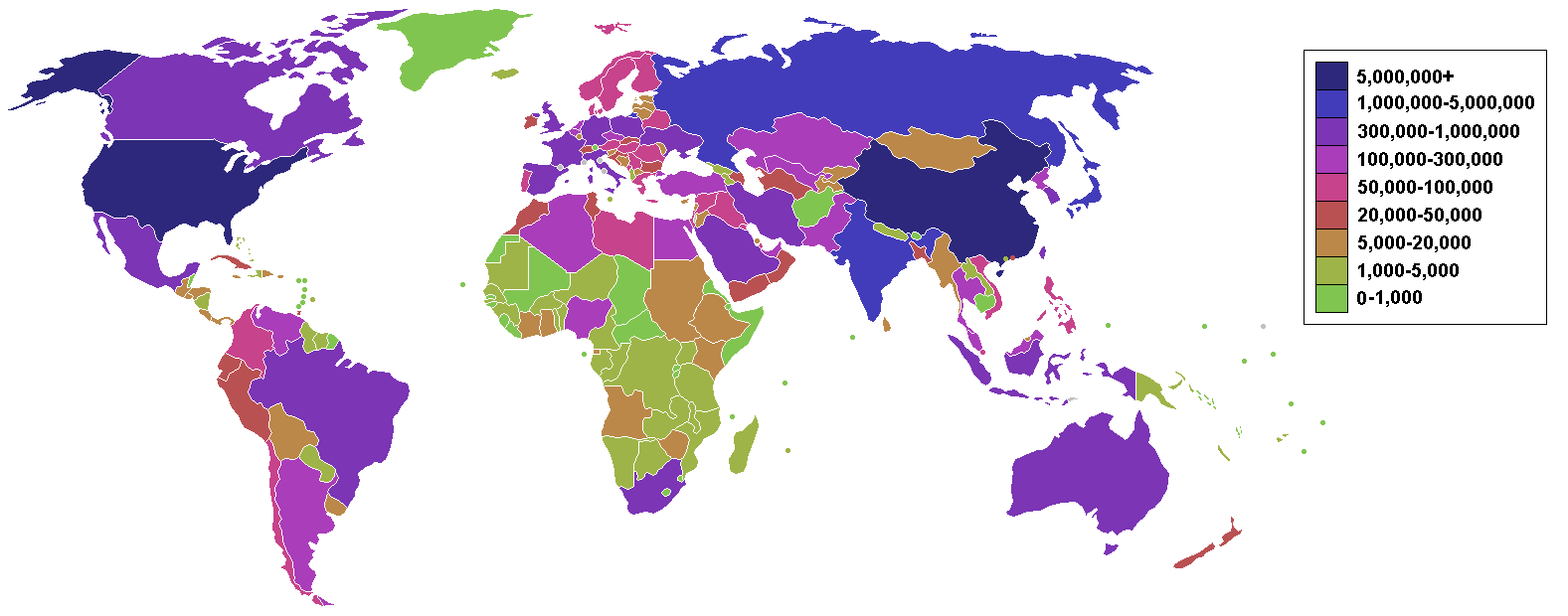This marks the start of a new series of posts that, from now on, will share the blog's spotlight together with the habitual posts analyzing the situation of the global economy. These series will be far more subjective than the economic analysis posts, I will just expose some ideas that cross my mind. That means I could incur in some inaccuracies from time to time, so take it with a grain of salt.
When there is so much talk about carbon emissions, lowering carbon footprints, global warming, the problem with fossil fuels, etc. what if we began helping by setting a yearly CO2 quantity that people are allowed to emit? I am talking about creating an "Individual Carbon Emissions Cap", similarly to what it is done with industrial emissions as stated by the Kyoto Protocol but taking it a step further by making citizens part of it.
What does this mean? Every participant country would set an Individual Carbon Emissions Cap (from now on I will call this ICEC for clarity's sake) for its citizens; a defined number of kilograms of CO2 that one person was allowed to emit to the environment over a year. For some people ICEC would instantly become an asset, for others it would mean a new tax, but in any case a tax you have control over... People would be able to trade part of their ICEC on a newly-defined public market (obviously with fixed prices per year to avoid the speculating vultures from spoiling the idea) and they could also make their cap grow by planting trees, sharing cars, installing or buying energy efficient devices and similar tree-hugger 'activities'.
How would it work?
The operation is quite simple, you would have a cap of say 5000 CO2 kilograms/year, or 5 metric tonnes. I fixed this number as an example as it is little more than half the average of many European countries, based on actual numbers of carbon emissions per capita (from 2007). The numbers from the link are the total country's emissions divided by the number of people on the country, so unless you have a private jet or a cement factory in your living room you are not going to reach that amount on a personal basis. You should fit all your personal carbon emissions on said 5 tonnes, that mainly means all household electricity and/or gas and your car's fuel consumption. Smoking or making barbecues are CO2 emitters too but apart from being a negligible source over the total they would also be though to measure...
 |
| Carbon emissions in thousands of metric tonnes. Credit: Wikipedia |
A normal car emits on average 150 grams of CO2 per km, so for 15000kms per year that would mean 2.25 tonnes. Meanwhile, electricity used at an average home (taking into account typical appliances) and gas heating (more efficient than electrical) should not amount for more than 2.5 tonnes per year. Just a clarification though, the electricity consumption part depends heavily on your country's electrical mix, so do not think buying an electrical car would help you lower your carbon count, as it could even make it worse, far worse...
This rough calculation leaves you still 0.25 tonnes of CO2 to sell on the hypothetical ICEC market, so unless you keep driving a truck around town, or have your house lit up by 100W light bulbs 24/7 you would still make a profit by keeping your fair usage. More importantly, people who do not use a car or take their measures to be energy efficient would be prized while wasteful spenders would be penalized.
This is a superficial explanation of how an Individual Carbon Emissions Cap could work, on part II of this idea I will focus on the implications this could have on the economy of the country where it was applied.
If your government creates something similar to this remember you read it here first!


No comments:
Post a Comment